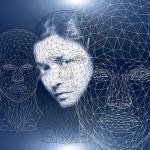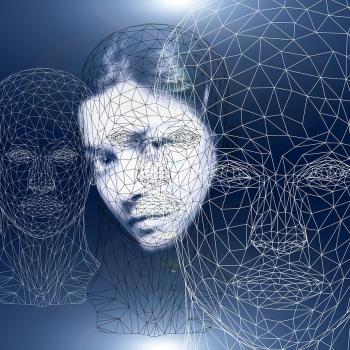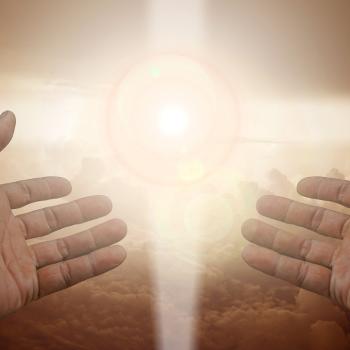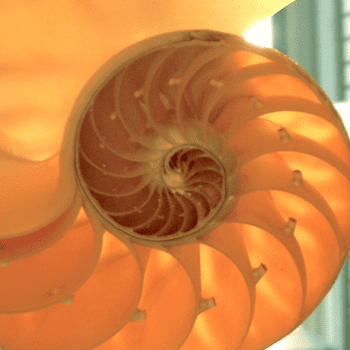What is Time?
(This article is the next part in the continuing series exploring the Nature of Prayer)
There are few experiences more commonly shared than the passage of time. In fact, to have an experience at all seems to require a change in the state of reality, occurring in a fixed succession of components: before, during, and after. Otherwise, it seems the “happening” could not “happen”.
Ubiquitous as time seems to be, it’s fundamental nature continues to be a matter of some debate. Up through the time of Issac Newton, time was thought simply to be a basic, common property of the cosmos. Yet thanks to the work that finally emerged as Einstein’s theories of Special and General Relativity, we now know that time varies due to factors such as relative position of observers, their motion, or their proximity to gravitational objects. Time is now treated as another variable dimension alongside space, bundled into the concept “spacetime”.
Consider also that time is experienced primarily as a change in some physical system — material or electrochemical (e.g. the hands on a clock, the change in an electrical field, growth or decline in biology) — leading Einstein predecessor Ernst Mach to state that: “It is impossible to measure the changes in things by time. Quite the contrary, time is an abstraction at which we arrive by the changes of things.”
“Real” as time may appear, even Einstein once observed that “Space and time are models by which we think, not conditions in which we live”. Accordingly, in this paper, where we consider consciousness as the primary universal factor, we will tweak the model somewhat, using the concept of an “event” as the label for something that is experienced in time.
Events, Event-lines. and Event-bundles
The concept of a “world-line” was introduced by physicist Hermann Minkowski and utilized by Albert Einstein in his theories of Relativity. It refers to the path a particle or object follows through spacetime — essentially its life-history.
While this generally refers to physical/material objects, for present purposes, we expand this to a more comprehensive concept of an “event-line”, which refers to all experiential phenomena of existence. Accordingly, this includes all material objects, both naturally occurring and those created by living systems. It also includes all non-material, abstract phenomena experienced by living systems — thought, feeling, principles, practices, personalities, knowledge, psychology, social structures, culture, and all other aspects of life. All of these are experienced along a trajectory (“line”) through time, and therefore have a history.
Just as complex physical objects — plants, planets, and people — are composed of simple forces and particles successively organized into increasingly complex sets of structures, we propose it is the same for all living experience. The “atom” of existence and experience is an “event”, which represents one simple quality attended to by an observing consciousness, out of the whole range of possibilities.
————————————
Note: The phrase “observing consciousness” can be prone to misinterpretation in this context. In common use, it implies an object external to and separate from an observer. Accordingly, in a model where consciousness is the fundamental, universal primitive, that would be a contradiction. In the current usage however, ‘observe’ is used in the sense of ‘attention to’ (or the highlighting of) a subset within one unified whole.
————————————
A surprisingly apt analogy is found in the digital image. All such images are composed of “pixels” (“picture element”), each of which represents a simple quality (e.g. color, intensity). These can then be arranged to form virtually any image recognizable to the eye.
In the same way, we propose that individual events are bundled through conscious observation into meaningful, useful structures that can themselves be successively further bundled into the familiar world of people, objects, and macro-scale events that we collectively experience.
“Parallel” Realities
Because we experience life-history as a specific chain of events over time — one set of possibilities, exclusive of other possibilities, we tend to assume that one particular historical account is “real”, whereas the other possibilities “did not happen”. Yet several cosmological theories might suggest otherwise.
One widely considered theory is the “Many Worlds Interpretation” (Hugh Everett III) which holds that at every quantum event, the universe branches in such a way to encompass all possibilities. Therefore all possibilities are objectively real — each in a “parallel” universe. <<https://en.wikipedia.org/wiki/Hugh_Everett_III>
Physicist David Bohm proposed there exists an “implicate order” in the cosmos, which is made “explicate” by the way in which we participate with it.:
- “The enfolded order is a vast range of potentiality, which can be unfolded. The way it is unfolded depends on many factors. The way we think and so on is among those factors. The implicate order implies mutual participation of everything with everything . No thing is complete in itself, and its full being is realized only in that participation. The implicate order provides an image of how this might take place in physics in various ways. In participation, we bring out potentials which are incomplete in themselves, but it is only in the whole that the thing is complete. This makes it clear that we are not acting mechanistically, in the sense that we would be pushed and pulled by objects in the surroundings, but rather we act according to our consciousness of them so if you are not conscious of them you cannot act intelligently toward them. Consciousness, therefore, is really our most immediate experience of this implicate order.
- Ordinarily we aim for a literal picture of the world, but in fact we create a world according to our mode of participation, and we create ourselves accordingly. If we think in our present way, we will create the kind of world that we have created. Then if we think in another way, we might create a different world, and different people as well.”
In other words, Bohm suggests that the reality, the world we experience, is made “explicate” by the way consciousness focuses upon (or “participates” with) a deeper pool of order that contains all possibilities.
Time vs Eternity
Despite all of the above, a basic conundrum exists: if all existence derives from one eternal (timeless) Consciousness, how does the experience of passing time emerge?
Philosophers from Parmenides, Zeno, and Plato, Bishop Berkeley, on up to physicists Dirac, Einstein, and Julian Barbour held unconventional notions of time. Some were Eternalists, maintaining that at the most fundamental level, the universe must be whole, complete, timeless, and unchanging. Anything less would be imperfect. In such a version of reality, how might the experience of time emerge?
Block Time, Block Universe
In his theory of General Relativity, Albert Einstein proposed that the dimensions of space and time are simultaneously contained in a “block universe” — one of the dimensions being “block time”. Difficult as this is to conceive of, simply stated, this implies that all possible events and all possible histories coexist simultaneously in an eternal “now” — all within the block.
In such a context, our experience of the passage of time is essentially a perception. It is based on conscious attention to particular subsets of the whole — like a sequence of snapshots within the block. That particular sequence is what we then consider to be our reality as it unfolds. Yet all other possible snapshots and sequences are potentially equally real — they simple were not observed and attended to, so remain unmanifested.
As a rough analogy, imagine a fixed videocamera, recording a motion picture of a flowing river. As objects float by the lens, there is a clear sequence of “before”, “during”, and “after” in the recorded frames. However, if the field of vision is widened to apprehend the whole river, the before/after quality disappears and it is now just a river in dynamic motion.
Similarly, our local, subjective fractals of Consciousness-at-large may limit the “God’s eye” view of the eternal Whole, breaking it down into the more manageable snapshot frames. As with motion picture film, by observing these frames in a particular sequence, the appearance of passing time and occurrence of events emerges. Were we able to “widen the lens” to apprehend the Whole, we could likely no longer remain mortal. (Approaching that experience is apparently what occurs during the use of psychedelics.)
(The next part in this continuing weekly series on the Nature of Prayer explores the questions “What is Life” and “What is the Self?”)

















